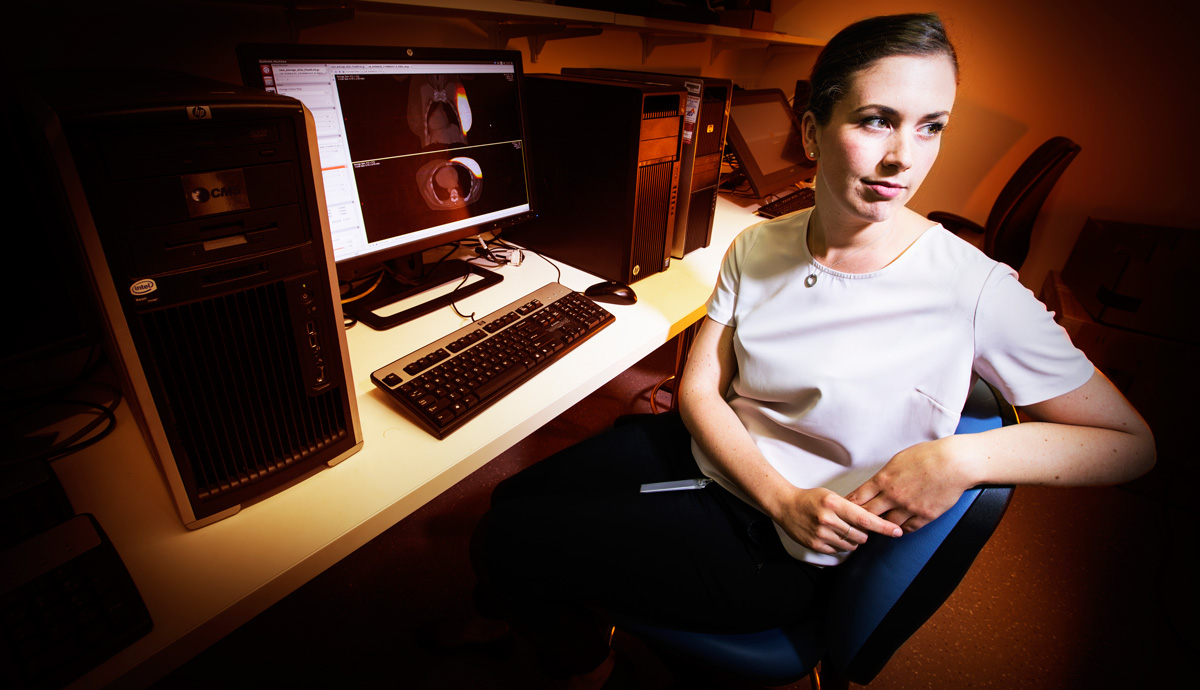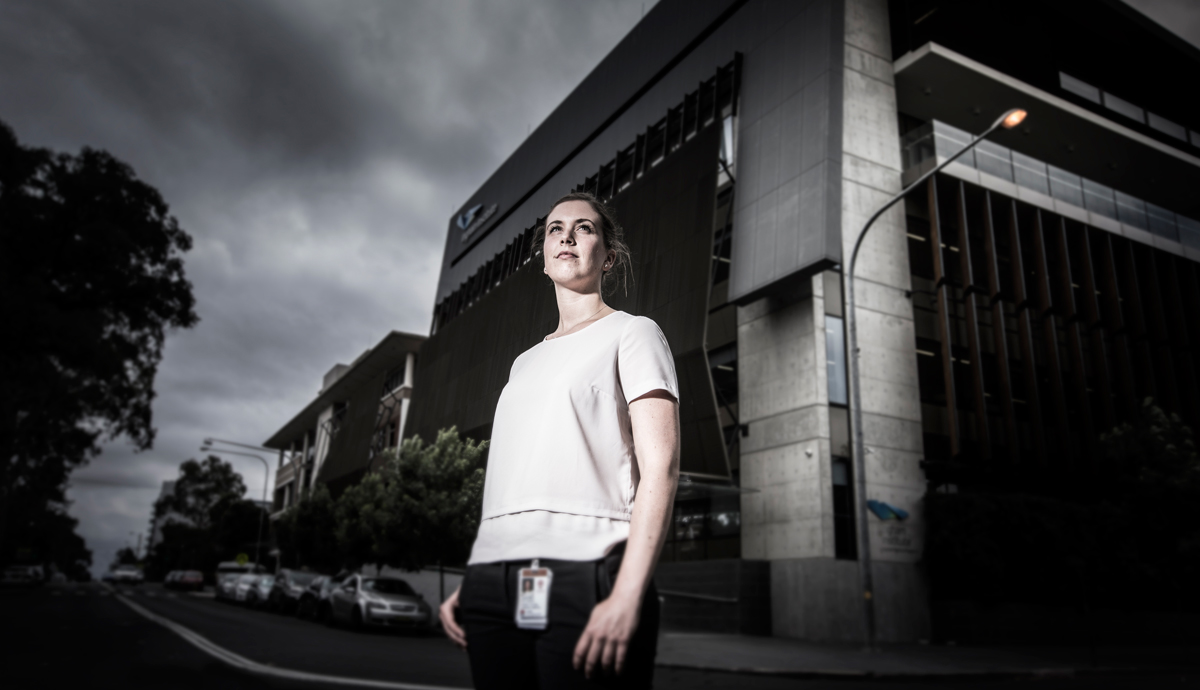January 15, 2016
Hitting the bullseye with cancer treatment
Inspired by personal experiences, PhD student Lauren Bell is developing methods to take the guesswork out of cancer radiotherapy.
Despite the ongoing advances in radiotherapy cancer treatment, uncertainties in accurately targeting the radiation dosage required to adequately treat a tumour can result in malignant cells being missed or the patient being delivered too large a dose, killing healthy cells.
Using data sets based on previous patient scans, Lauren’s research is helping to improve the accuracy of the radiation required to treat the disease, reducing the margin of error, or uncertainty, doctors face where imaging lacks the detail to accurately define the shape and size of the tumour.
Her journey to becoming a leading researcher in removing the ‘weak link’ in cancer treatment can be traced to her childhood when her younger sister Rachael was diagnosed with Acute Lymphoblastic Leukaemia at age 9.
During the next two years of Rachael’s treatment, Lauren frequented hospitals with her family, leaving a lasting impact on her future choices.
“I think because we were all so young, it had a big impact on shaping who I am today,” Lauren said. “I guess I didn’t fully grasp the concept of cancer and how sick Rachael was, because I remember the visits to hospital as exciting times rather than sad or scary.
“I was fascinated by the place and the staff. As I got older, I realised I wasn't very suited to being a doctor or nurse, but the fascination with hospitals and medicine never left me.”
Her early interest in medicine as well as a love of maths and problem solving led her to choose Medical Physics as an undergraduate degree and she jumped at the chance to do a clinical research project as part of her honours and PhD, with the Centre for Medical Radiation Physics (CMRP) and the Liverpool and Macarthur Cancer Therapy Centres.
The culmination of her efforts is expected to directly contribute to successful radiotherapy treatment for cancer patients, translating to patients living healthy happy and cancer-free lives for longer.
“How well a patient recovers is directly related to the radiotherapy treatment hitting all the malignant cells,” Lauren explained.
“While we continue to develop ways to precisely deliver cancer destroying radiation to where we want, we can’t be certain we are accurately hitting the target.
“If we were archers, we could hit the same point on the target every time with our bow and arrow. But, are we hitting the mark? Without methods to account for these uncertainties we risk delivering ineffective treatment and significant toxicities.”

To combat the uncertainties, each specialist relies on a combination of scans and imaging to detect the outline, or contour, of the tumour.
This is easily done when the scans reveal a clearly defined tumour, yet, even high-quality imaging cannot reveal the microscopic detail of the tumour and its exact breadth and depth remains difficult to define.
“Every doctor defines the target differently, due to experience, image quality, lighting or even the time of day. The problem is, it's impossible to visualise exactly where the boundary should be drawn with these images.”
Over the course of a treatment cycle, each radiation dose is intended to land in the same area, but if that area is not the bullseye of the tumour, or the target area varies between doctors who treat the patient, its effectiveness is limited.
Lauren’s work involves precisely calculating a region that’s a little larger, ensuring all the cancer cells are destroyed.
“Specifically, my research looks at how much extra we’re going to treat and we call it a ‘delineation margin’,” she said.
The margin takes into account the differing assessments of multiple clinicians, and using probability maps, calculates the contour of the tumour.
“The contouring technique aims to reduce uncertainty, but also save valuable clinician time as well as increasing the likelihood of the patient receiving successful radiotherapy treatment first time and with potentially fewer follow-up courses of radiation.”
Lauren’s research will be boosted this year through a 2016 Endeavour Research Fellowship that will enable her to visit Oslo University Hospital for five months to work alongside global leaders in radiotherapy.
During her time in Oslo, Lauren will work alongside Associate Professor Taran Paulsen Hellebust and have access to expertly-defined datasets that will help validate the techniques she’s developed as well as enabling a comparison between European and Australian best practice.
Professor Hellebust is a physicist at OUS and the secretary of the Gyn GEC-ESTRO network, a network of European experts in gynaecological radiotherapy that devise and develop international practice.
Lauren said collaboration and ongoing access to this expertise would increase the knowledge base of local expertise and ultimately lead to improved local treatment practice.
She was also awarded a postgraduate prize and at the MedPhys 15 conference, held at the University of Sydney in late 2015.
